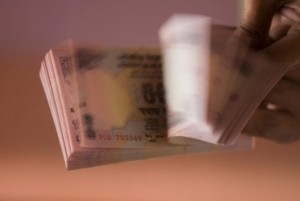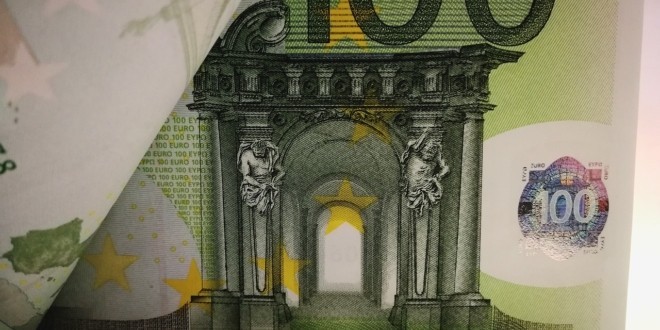Our payments news is decidedly global today with items from the EU, US, Brazil and Asia. UK consumer use of cash dropped by 11% last year to 44%, the second year in a row it was below 50% of transactions. In India, demonetization maybe taking hold as the government’s policy has impact on available cash and new payment forms proliferate. MIT Technology Review looks at whether WeChat can thrive in the US? The MIT Technology Review also looks at Face++ and other successful facial recognition programs in China.
 BBVA now has more than 3 million Spanish mobile account users and mobile transactions are up 135% in 2017 alone. Eleven major banks are working with R3’s Corda blockchain technology to improve letters of credit transactions. Digital identity startup Socure received $13.9 million in new funding from Santander InnoVentures, Flint Capital, Work-Bench and Two Sigma Ventures.
BBVA now has more than 3 million Spanish mobile account users and mobile transactions are up 135% in 2017 alone. Eleven major banks are working with R3’s Corda blockchain technology to improve letters of credit transactions. Digital identity startup Socure received $13.9 million in new funding from Santander InnoVentures, Flint Capital, Work-Bench and Two Sigma Ventures.
Zalo Pay mobile payments app launches in Vietnam. Visa Performance Solutions estimates Brazil e-commerce grew 11% last year despite the downturn in the economy. Paying for products with a selfie as payment is now a reality at The Selfie Store by Mark, a cosmetics store in Australia.
Uneasy sits the crown as cash use continues decline
 The numbers of people using cash to pay for everyday purchases in the UK declined by 11% over the past year as growth in contactless card use accelerated.
The numbers of people using cash to pay for everyday purchases in the UK declined by 11% over the past year as growth in contactless card use accelerated.
Consumers and businesses made 15.4 billion cash payments in 2016 – down from 17.2 billion in 2015, according to figures released by UK Finance. However despite the decline, cash was still used 25% more often than the second most frequently used method; debit cards (11.6 billion).
During 2016, cash represented almost half (44%) of all payments made by consumers – the second year in a row where consumers used cash for fewer than 50% of all payments. During the same period, cash payments reached £240 billion, accounting for 15% of the total value of consumer spending, a decline of five percent compared to the previous year.
Via Finextra.com
Early Trends Suggest India Has Won Its War on Cash
 If early trends are any indication (and if the trends persist), India may have won its war on cash and moved firmly towards digitalization – two major aims of the demonetization exercise announced by Prime Minister Narendra Modi on the night of 8 November last year.
If early trends are any indication (and if the trends persist), India may have won its war on cash and moved firmly towards digitalization – two major aims of the demonetization exercise announced by Prime Minister Narendra Modi on the night of 8 November last year.
Before demonetization, India relied heavily on cash and had an unhealthy cash-to-GDP ratio (12 per cent). The trend was also worsening over time.
Finance Minister Arun Jaitley tabled the second part of Economic Survey 2016-17 in Parliament today (11 August), which tells us that in levels, and as a share of GDP and money, there seems to have been a sharp and equilibrium decline in the use of cash post-demonetization. Currently, the total cash in holding is Rs 3.5 lakh crore, which is 20 per cent less than the level it would have been at if the demonetization exercise would not have happened. Via swarajyamag.com
Can WeChat Thrive in the United States?
 Some of America’s most formidable technology companies have headed to China. Once they got there, their superpowers seemed to vanish. Uber, Amazon, and Apple are just a few examples of firms that have been humbled by the Chinese market. It may be tempting to blame Chinese censorship or government restrictions. But that wouldn’t explain why the reverse is also true: China’s superstar companies also struggle to make it in the United States.
Some of America’s most formidable technology companies have headed to China. Once they got there, their superpowers seemed to vanish. Uber, Amazon, and Apple are just a few examples of firms that have been humbled by the Chinese market. It may be tempting to blame Chinese censorship or government restrictions. But that wouldn’t explain why the reverse is also true: China’s superstar companies also struggle to make it in the United States.
There may be no better example than Tencent’s WeChat, the mobile messaging and payment app that has over 900 million monthly active users. Foreigners who visit China are awestruck by the complete dominance of this super app, which people use for everything from sending messages to hailing taxis to buying real estate. WeChat has millions of verified official accounts—including brands, celebrities, even hospitals—that can receive mobile payments using its network. For many Chinese, WeChat is a wallet and communication platform, and it’s impossible to imagine life without it.
In 2013, Tencent announced that it was opening an office in the United States with the aim of bringing WeChat to America. Having enjoyed success in its home market, seeking growth abroad was a natural next step. The company also saw an opportunity: there were already messaging apps in the U.S. market, but none had taken the country by storm. There seemed to be room for WeChat to shake things up, but that’s not what happened. Today how many Americans, aside from the ones with connections to China, have even heard of the product? Via technologyreview.com
Meet the Company That’s Using Face Recognition to Reshape China’s Tech Scene
 In China, face recognition is transforming many aspects of daily life. Employees at e-commerce giant Alibaba in Shenzhen can show their faces to enter their office building instead of swiping ID cards. A train station in western Beijing matches passengers’ tickets to their government-issued IDs by scanning their faces. If their face matches their ID card photo, the system deems their tickets valid and the station gate will open. The subway system in Hangzhou, a city about 125 miles southwest of Shanghai, employs surveillance cameras capable of recognizing faces to spot suspected criminals.
In China, face recognition is transforming many aspects of daily life. Employees at e-commerce giant Alibaba in Shenzhen can show their faces to enter their office building instead of swiping ID cards. A train station in western Beijing matches passengers’ tickets to their government-issued IDs by scanning their faces. If their face matches their ID card photo, the system deems their tickets valid and the station gate will open. The subway system in Hangzhou, a city about 125 miles southwest of Shanghai, employs surveillance cameras capable of recognizing faces to spot suspected criminals.
The technology powering many of these applications? Face++, the world’s largest face-recognition technology platform, currently used by more than 300,000 developers in 150 countries to identify faces, as well as images, text, and various kinds of government-issued IDs (see “10 Breakthrough Technologies 2017: Paying with Your Face”).
Other Chinese companies, such as Baidu and the startup SenseTime, also provide face-recognition technology to developers, but Face++’s popularity has been a boon for Megvii, the Beijing-based company that created and runs the platform. Founded in 2011 by three Tsinghua University graduates, Megvii is now valued at roughly a billion dollars and boasts approximately 530 employees, up from about 30 employees in 2014. Via technologyreview.com
BBVA reaches over three million mobile customers in Spain
 BBVA has reached over three million mobile customers in Spain, with product sales via the smartphone now surpassing online applications from the bank’s Website. The Spanish bank says interactions via the mobile app have seen a 135% increase over the course of the past year, rising from 23.8 million in May 2016 to 56 million in May 2017. Mobile app subscribers have grown by 30% over the past seven months, continuing the strong momentum that has been in place since December 2015, when the bank had 1.9 million mobile customers.
BBVA has reached over three million mobile customers in Spain, with product sales via the smartphone now surpassing online applications from the bank’s Website. The Spanish bank says interactions via the mobile app have seen a 135% increase over the course of the past year, rising from 23.8 million in May 2016 to 56 million in May 2017. Mobile app subscribers have grown by 30% over the past seven months, continuing the strong momentum that has been in place since December 2015, when the bank had 1.9 million mobile customers.
The data complements figures released by the bank in June, that chalked up nearly a million product sales worldwide through purely digital channels, representing 22% of all sales for the year. Mobile is at the forefront across the group’s international operations, with 14.5 million of the bank’s customers using the mobile channel. Via finextra.com
Eleven banks develop trade finance app on R3’s Corda DLT platform
 Eleven banks have passed a major milestone in digitization of documentary trade finance. They have developed a prototype application on R3’s distributed ledger platform, Corda, that has the potential to significantly reduce inefficiencies and costs by streamlining the processing of sight letters of credit.
Eleven banks have passed a major milestone in digitization of documentary trade finance. They have developed a prototype application on R3’s distributed ledger platform, Corda, that has the potential to significantly reduce inefficiencies and costs by streamlining the processing of sight letters of credit.
Bangkok Bank, BBVA, BNP Paribas, HSBC, ING, Intesa Sanpaolo, Mizuho, RBS, Scotiabank, SEB and US Bank have collaborated with R3 and technology partner CGI over the last year on numerous trade finance projects, building and testing applications. Using lessons learnt from these projects, the group has now developed a trade finance application on Corda that incorporates shippers and carriers. Several R3 member institutions now intend to pilot the platform with the goal of making it widely available in 2018. Via finextra.com
Santander InnoVentures pumps more money into digital ID firm Socure
 Santander’s fintech venture capital fund has joined a $13.9 million Series B funding round for New York-based digital identity startup Socure. This is the second tranche of money that Santander InnoVentures has put into Socure following an investment last summer. Flint Capital, Work-Bench and Two Sigma Ventures joined Santander in the latest round
Santander’s fintech venture capital fund has joined a $13.9 million Series B funding round for New York-based digital identity startup Socure. This is the second tranche of money that Santander InnoVentures has put into Socure following an investment last summer. Flint Capital, Work-Bench and Two Sigma Ventures joined Santander in the latest round
Socure taps data from the digital footprint of consumers, including social media, to confirm the identity of new account applicants in real-time. The firm counts a top five US bank and a top five global money transfer provider among its many FS industry clients. Via finextra.com
Vietnam’s Zalo Pay Brings Payments To Social Media in Vietnam
 Zalo Pay, a product of ZION, is bringing mobile, contactless payments to Vietnam’s popular social media and messaging platform Zalo.
Zalo Pay, a product of ZION, is bringing mobile, contactless payments to Vietnam’s popular social media and messaging platform Zalo.
Launched in 2012, Zalo is a free message and call mobile app used by 70 million people. Zalo entered the Myanmar market in mid-2016 and got 2 million users just after four months. The app is mainly used in countries with large Vietnamese communities such as the US, Korea, Japan, and Singapore.
ZION is the owner of 123Pay and an affiliate of VNG Corporation (formerly Vinagame), a Vietnamese tech company specializing in digital content and online entertainment, social networking and e-commerce. In early 2016, online payment platform 123Pay was granted a license to provide intermediary payment services, electronic payments and digital wallet services. 123Pay serves over 200 e-commerce enterprises in Vietnam including Lazada, Galaxy Cinema and Nguyen Kim’s electronics superstore. Via fintechnews.sg
E-Commerce in Brazil Is Expected to Grow 4X Over the Next Few Years
 E-commerce is expected to increase more than fourfold in the next few years in Brazil, according to Worldpay, one of the leading payment processing companies globally.
E-commerce is expected to increase more than fourfold in the next few years in Brazil, according to Worldpay, one of the leading payment processing companies globally.
“E-commerce slice of GDP in Brazil is around from 1.5% to 2% of GDP. In developed countries like the UK, the slice is about 8.5% to 9%. Brazil has all the structure ready to reach these values with the use of smartphones, broadband internet and access to payment methods. We have no doubt that this is the future of payment in the Brazilian market,” said Juan D’Antiochia, General Manager of Worldpay for Latin America. The company will invest R$ 70 million to enter the acquiring market in Brazil, focusing on digital commerce.
More than 58,000 digital purchases were made per hour in Brazil in 2016. In that year, even with 4.2% of retraction of consumption compared to 2015, e-commerce grew by 11%. That’s because more and more Brazilians began buying online: the number grew 38% last year, according to a survey by Visa Performance Solutions. Via letstalkpayments.com
At this makeup store in Australia, customers pay by taking a selfie
 Imagine paying for something simply by taking a selfie with it? Okay, now imagine that’s a real-life thing because it is. At The Selfie Store by Mark. The cosmetic brand Mark (the Avon offshoot) has recently launched in Australia and to commemorate the moment, they opened a pop-up shop where you pay for products by taking a selfie.
Imagine paying for something simply by taking a selfie with it? Okay, now imagine that’s a real-life thing because it is. At The Selfie Store by Mark. The cosmetic brand Mark (the Avon offshoot) has recently launched in Australia and to commemorate the moment, they opened a pop-up shop where you pay for products by taking a selfie.
Paying via posting a selfie wearing the makeup is a clever idea, as so many people learn about new products and makeup trends from Instagram these days.
Last year, Amazon filed a patent to own the “pay-by-selfie” model. However, their idea was different. Similar to one-click ordering, you would take a picture of your face that would activate the payment screen. So you weren’t necessarily paying WITH your selfie, but using your selfie as your login. Via hellogiggles.com








LET’S CONNECT